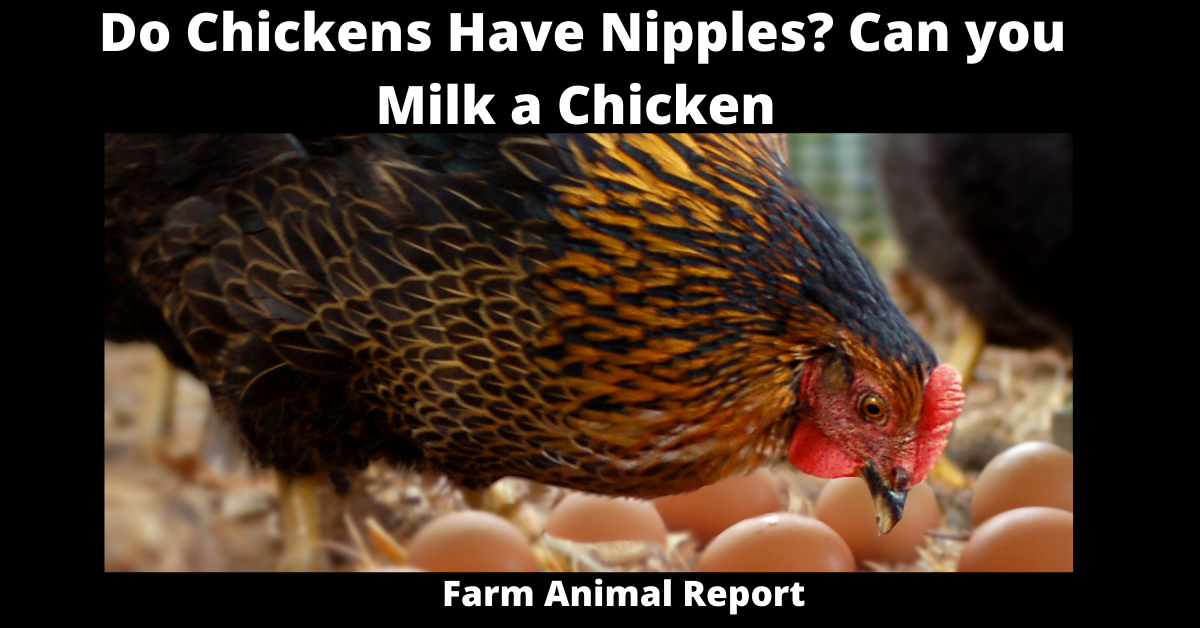As a rule – Chickens lack nipples because they do not produce milk to feed their young. Mammals are the only group of animals capable of producing milk and providing it to their young via a nipple; birds do not fall into this category. Although the term “chicken breast” is frequently used, does this imply that chickens have breasts? Chickens do have a breast, but not in the way that mammals do.
Do Chickens Have Nipples?
The term breast refers to the chicken’s front meaty section, not to the milk-producing mammary glands found in most mammals. The fact that the term ‘breast’ refers to this area of the bird contributes to the widespread misconception that chickens have nipples, which serve no purpose when it comes to feeding chicks. Do Chickens have nipples?
12 Ways to Make Money by Chicken Farming—Extensive Guidelines for Chicken Farmers
The term “breast” has a very different connotation when applied to a bird’s chest versus a female mammal.
The distinction is that while all female mammals (including humans, dogs, cats, and monkeys) possess mammary glands, birds do not. This is one of the reasons they are referred to as “mammals.”
Do Chickens Have Nipples – Mammary glands are present in mammals because they lactate, produce milk, and nurse their young. On the other hand, Chickens lack mammary glands and are incapable of nursing their young (without the glands).
This is not to say that mother hens abandon their chicks to fend for themselves; do not panic. Instead, they care for them by bringing them food scraps and insects and demonstrating what they can eat.
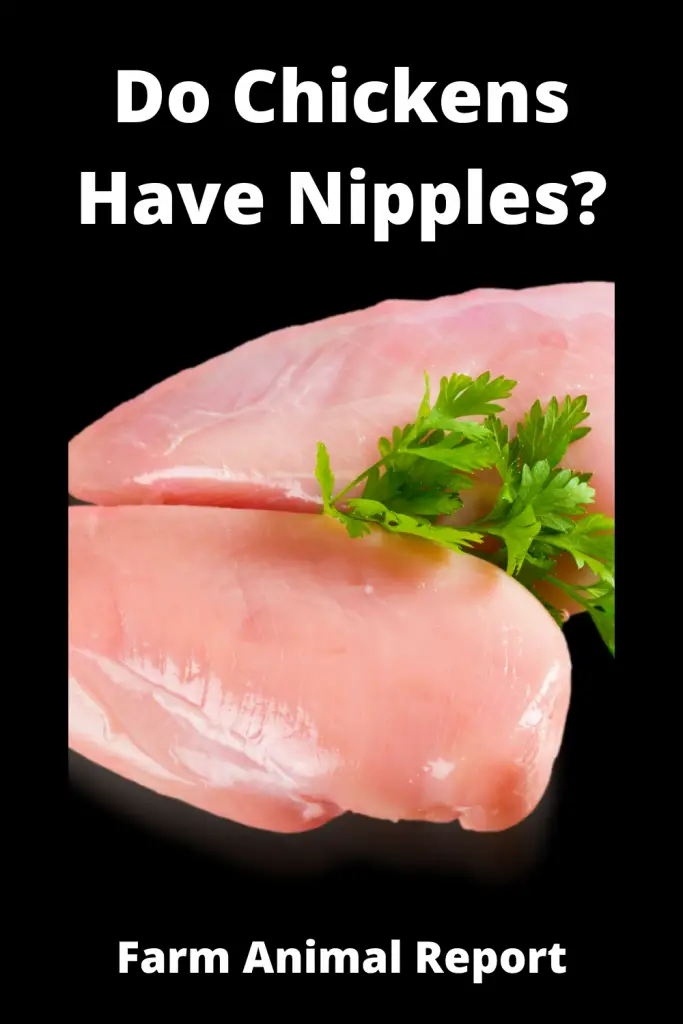
Mammary glands are located in front of the chest or pectoral muscles in mammals and are frequently referred to as breasts in females. Chickens only have pectoral muscles; they lack glands in front and beneath the skin’s surface. Due to their similar position, they are also referred to as breasts.
Paragraph For Amazon Resources for Raising Meat Chickens
This means that chickens (mother chickens) do not require nipples because they do not produce milk and therefore do not require it to be secreted. Men, of course, have nipples as well, but that is a topic for another day. Chickens have breasts because they require those muscles to move various body parts. Because they lack mammary glands and do not produce milk, they do not need or have nipples.
Why do Chickens have Breasts?
Chickens have a single breast section called breasts when they are split in half and sold as meat in stores. The chicken’s breast section is a fleshy region that serves no purpose other than to protect the internal organs.
Additionally, the chicken has an organ called the crop located above the breast area and is used to store and soften food before it is digested. Therefore, if the chicken has consumed a large meal, the breast may appear to bulge, and you may even feel the food inside if you gently press on the chicken’s chest area.
How do Mother Hens Feed their Chicks?
Mother hens do not feed their chicks directly, but they demonstrate and teach them how to forage for food by scratching and unearthing it with their feet and pecking at it with their beaks. A newly hatched chick quickly learns to forage for food alongside its mother hen, who assists it in unearthing morsels of food for her chicks.
Do any Birds have Nipples?
Birds lack nipples due to their non-mammalian status. Although we speak of bird breasts, birds lack the mammary glands that mammals use to feed their young. The term “breast” refers to the pectoral muscles that birds use for flight. They have pectoral muscles in birds.
However, certain birds, such as pigeons and doves feed their young milk, a secretion produced by the crop lining, a muscular pouch that is a part of their digestive tract.
Crop milk is not the same as mammalian milk. It contains a high protein and fat content and has a semi-solid consistency similar to cottage cheese. Additionally, crop milk contains anti-oxidants and immune-enhancing substances, as well as antibodies and bacteria.
Do Chickens have Belly Buttons?
Birds develop in a self-contained shell that already contains a life-support system. They, like us, do not require an umbilical cord to transport nutrients from their mothers during development. Thus, biologically speaking, they do not need an umbilical cord. Not in the same way that humans and other mammals do.
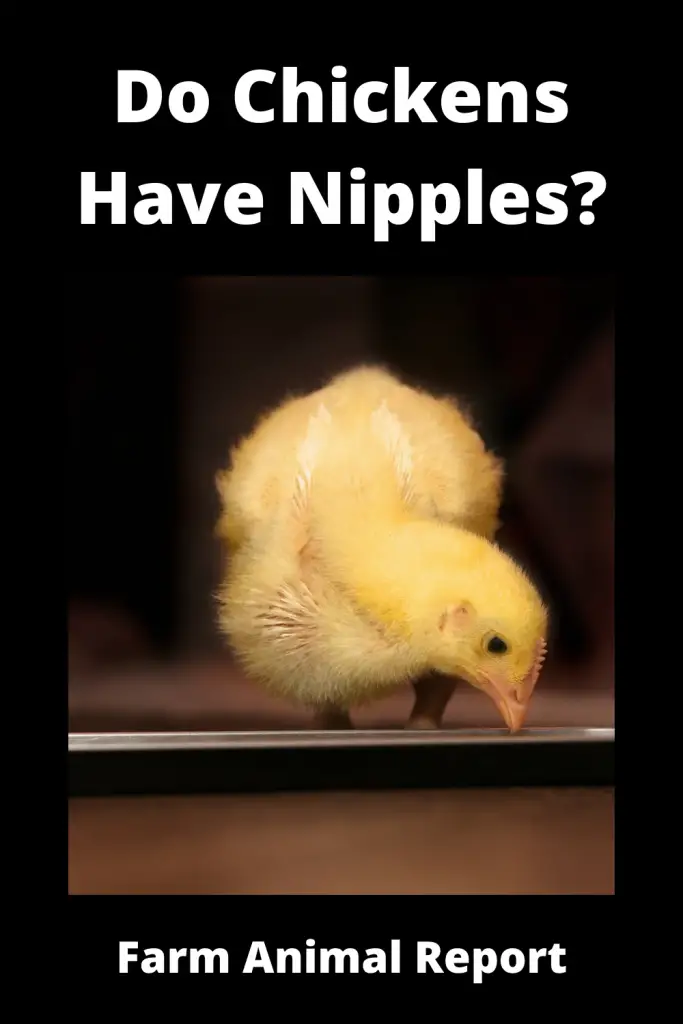
A cord connects the embryo to the yolk sac, allowing it to obtain nutrients from the egg. That is how the embryo develops at a reasonable rate while receiving the necessary warmth from the incubator. Is This To Suggest That Chickens Have Belly Buttons? No, not quite. Instead of an umbilical cord scar, chicks will have a yolk sac scar. As I previously stated, this is because they do have a cord, but it is not an umbilical cord. It appears to be a small black dot. However, it virtually vanishes within days and is completely invisible as a chick grows up.
If you’re checking yourself, don’t confuse this with their vent. When chickens reach maturity, they use their vent to produce waste and lay eggs. As I’ll refer to them, the vent and belly button are very close together and do appear similar during the first few days. However, the vent is located lower down. Chickens are birds, and their young are not nursed with milk. While it may appear that way when she has all her babies beneath her, chickens lack the breast tissue, milk glands, and nipples that mammals have to feed their young. Baby chicks instinctively respond to their mother scratching, pecking, picking up objects with her beak, and making a chick-specific noise.
Chickens are good parents, but they do not produce milk. A hen’s closest approach to feeding her young is to hold food in her beak and allow them to peck at it. Additionally, she may peck pieces from more oversized food items and drop them for her young. Hens are excellent multitaskers for incubating eggs and caring for chicks, but they dont produce milk to feed their young. Pectoral muscles, not breast tissue, make up the chicken breasts.
Chickens are not mammals and do not breastfeed their young, so they lack milk ducts and breast tissue similar to a female human. Mother hens will call their chicks to the food and pick up and drop bits to demonstrate to them. It’s pretty endearing to watch. Chickens are not like some birds, in which the parents abandon the chicks in the nest and spend the next three weeks or so bringing them all their food until they are ready to fledge.
Chicken broods can grow to be as large as 16, and if the hen is required to feed them all, this will never work; the robin in my garden struggles to raise three chicks in this manner.
How do Mother Hens Feed their Baby Chicks?
Mother hens have a distinctive cluck that they use to attract the chicks’ attention and then pick up and drop food to entice the chicks to eat. The same technique can teach day-old chicks that were hatched in an incubator to eat. Collect some chick crumb and place it on some paper; this will entice the chicks to peck at the feed.
They scratch at food and make a distinctive clucking noise to demonstrate the food to the chicks and inform them that it is safe to eat. My broody hens typically sit for one or two days following the start of hatching, then leave the nest with the babies. For the first day or two, they remain close and do not venture far.
You will notice that the chicks spend the majority of their time snuggled up warm beneath their mother’s wings. The babies will observe their mother’s eating and drinking and will imitate her behavior. As soon as they can walk, baby chicks instinctively know how to scratch around in the ground for food.
They are mostly left alone to scratch for bugs and grain.
Therefore, you will need medicating or unmedicated chick starter crumbles, a water supply, and chick grit. Sprinkle a small amount over their crumbles. Mom will take care of everything; she will consume the starter crumbles as well, which is acceptable; however, you must ensure that the chicks can quickly enter and exit their nesting box, or they will starve or freeze.
Chick grit is critical for hen-reared chicks. She will provide them with natural foods such as grass and tiny pieces of scratch, as grit is required to digest their food or suffer crop damage properly. You can either feed them chick starter food or coarsely crushed corn.
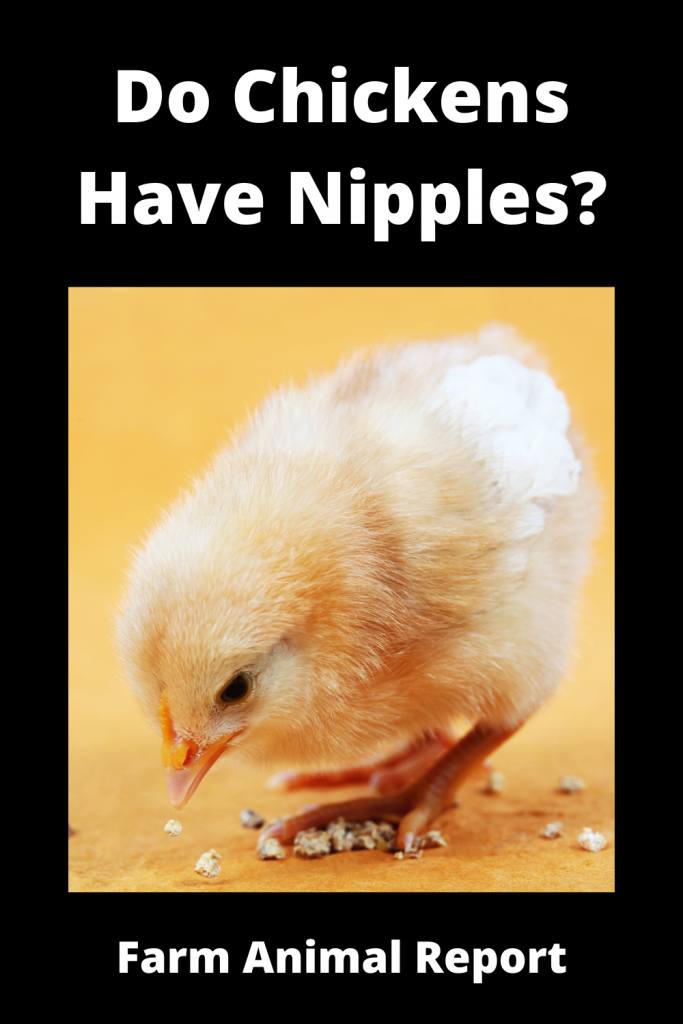
Do Hens Feed their Chicks at Night?
No, hens do not breastfeed their young at night. She will keep them warm and snug in her feathers, but chicks do not eat from bedtime to dawn and will wake up ravenous. Using her body heat to keep her chicks warm is an excellent way for them to conserve energy because they are not required to generate as much heat on their own. Baby chickens, or chicks, are hatched ready to survive on their own; this enables them to be easily raised commercially.
Chicks remain close to the mother hen for warmth and protection, but the mother hen does not feed them directly, as a pig does with her piglets. Around the world, many more chicks are hatched in incubators and raised entirely without a hen. These chicks will consume food that has been provided for them and will require little assistance from their human caregivers.
Do Baby Chickens Drink Milk?
If you give chicks milk, they will drink it. Chickens will consume cream, yogurt, and liquid milk, and in moderation, sour milk is acceptable. However, because milk proteins and sugars were not a part of a chicken’s diet in the wild, they are not ready to digest them properly.
Science of Baby Chick Nutrition
Baby chicks are prepared for their first meal from the moment they hatch. Adequate nutrition is critical for raising happy, healthy chickens during the first six to eight weeks of their lives. A baby chick’s anatomy begins to develop immediately after birth. Protein is a critical nutrient for the growth of a hungry, developing chick. It contributes to the stimulation and support of muscle and tissue growth and the growth of internal organs. In addition, it is a necessary building block that is naturally found in worms. As such, feel free to provide fresh worms to satisfy your chicks’ hunger and protein requirements.
Worms are plentiful during the spring and summer months and are nature’s self-sufficient source of fresh protein. In addition, poultry feed is formulated to provide vitamins and minerals, fats and oils, carbohydrates and proteins, and preventive medication in some cases. The ingredient list is extensive and may include cereals and flours made from barley, corn, or wheat, as well as protein-rich soybeans, peanuts, and canola.
How does a Hen Bond with Her Chick?
Chicks are brilliant and begin to move around immediately after hatching. However, survival in the wild is contingent upon rapid bonding between mother and offspring. Therefore, it is critical for chicks to imprint on their mother following hatching.
Around an hour after hatching, they will follow any moving object that contrasts with the background.
After hatching, proper imprinting and bonding can take between 9 and 20 hours. After that, the hen “clucks” and the chick “peeps,” with the hen clucking more, and the chicks are peeping less. Chicks moving along with their dam make complete contentment twitters or distress cheeps. If the hen comes to a halt and calls, the chicks remain still. If she is too far away from the chicks, they will peep, and she will go to brood them.
When a strange mother’s call is played, the chicks remain for more extended periods and peep less frequently. The length and volume of the call influence chick behavior, whereas the frequency of the sound enables a recognition of their own parent’s voice.
Because chicks are unable to recognize one another until they reach ten days, the hen and her calling system keep the brood together and prevent aggression between the chicks. Additionally, the hen teaches the chicks how to respond to food and predators.
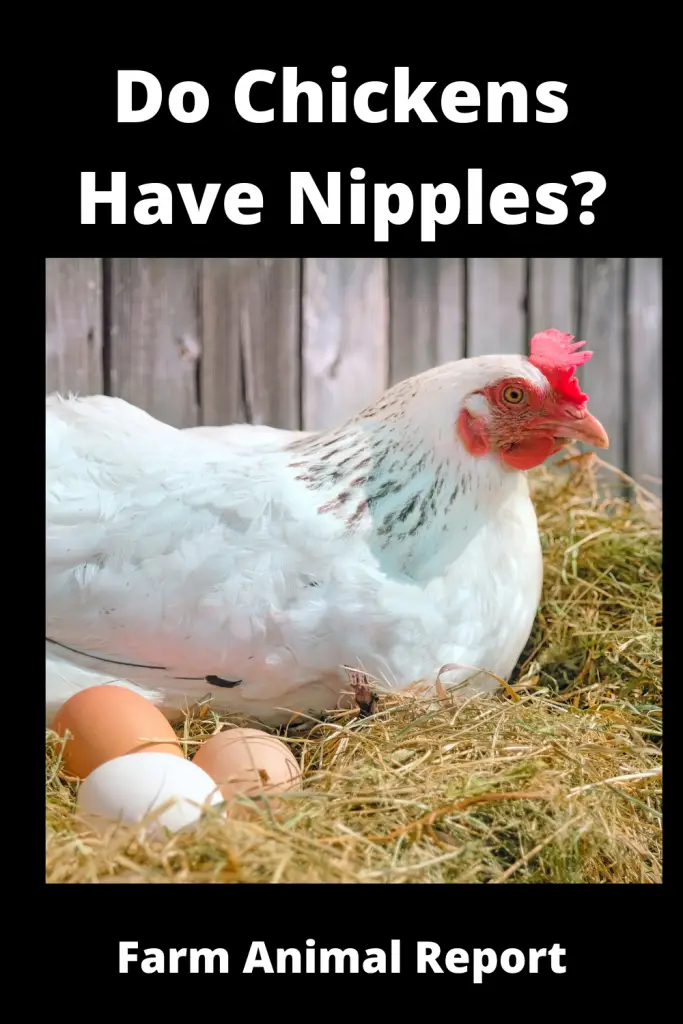
Usually, chicks exhibit fear 33-36 hours after hatching, but this can be extended if they are isolated. Before three days post-hatching, the experience of communal feeding must be obtained. Wild spring-hatched chicks have been observed walking over 3 kilometers per day, with the hen walking alongside them 24% of the time.
Their productive day lasted 16 hours, and the hen initiated the majority of behavior, mainly feeding, pecking, and scratching the ground. Additionally, she averted fights between chicks. A broody hen and her chicks will isolate themselves and will threaten any other hens within six meters.
At 5-6 weeks in the wild, the dam begins leaving chicks on the ground at night when she returns to roost in a tree. By 10-12 weeks of age, when the chicks were feathered, the hen began to threaten them, signaling the end of their days with Mum. Before weaning, the hen allows her chicks to run ahead of her, but they walk behind her afterward due to her claim of a higher social status. Finally, at 16-18 weeks of age, the brood begins to disperse, and adult behavior patterns emerge. For example, a hen will accept strange chicks two to five days after hatching if their color matches her own.
Health Problems of Poor Chick Nutrition
It is critical for your birds’ health and productivity to feed diets that meet their nutritional requirements. Therefore, complete feeds are available that are formulated to meet all of the dietary needs of a specific poultry class.
Vitamins
Fat-soluble vitamins
Vitamin A
Vitamin A is necessary for the health of the digestive, urinary, reproductive, and respiratory systems’ membranes. A vitamin A deficiency can occur when the amount of vitamin A in the diet is insufficient or when vitamin A added to the diet is oxidized by rancid fat. Additionally, neomycin, a common antibiotic, inhibits vitamin A absorption. Vitamin A is fat-soluble, and an insufficient amount of fat in the diet may also inhibit its absorption, even if the amount of fat in the diet is adequate.
Vitamin D
In poultry, vitamin D deficiency results in an insufficient amount of vitamin D3 in the diet. Vitamin D3 is required for normal calcium and phosphorus metabolism and the development of a normal skeleton. Rickets is a disease that affects young birds, whereas cage layer fatigue (osteomalacia) is a disease that affects mature females.
Vitamin E
Vitamin E deficiency causes ‘crazy chick disease’ or encephalomalacia (softening of the brain). It typically occurs between 15 and 30 days of age in chicks. Vitamin E is necessary for reproduction and the proper functioning of the central nervous and muscular systems.
An insufficient intake of vitamin E causes vitamin E deficiency. Additionally, vitamin E is a substance that is easily destroyed by heat (a term referred to as heat-labile). Therefore, a selenium deficiency will also result in a vitamin E deficiency. Selenium levels are deficient in some parts of the country, resulting in low selenium levels in cereal grains. Vitamin E deficiency has similarities to Avian Encephalomyelitis (AE), Newcastle Disease (AE), and vitamin B1 deficiency.
Vitamin K
Vitamin K is needed for the production of prothrombin, a protein that is required for blood clotting. Thus, a vitamin K deficiency increases hemorrhaging. In addition, it may increase embryonic mortality, with hemorrhaging conditions in the dead embryos.
A vitamin K deficiency can occur as a result of a vitamin K deficiency in the diet. As a result, Sulfa quinoxaline levels are elevated, a medication used to prevent or treat coccidiosis in chickens and turkeys.
Water-soluble vitamins
Vitamin B1
Vitamin B1 deficiency is caused by an insufficient amount of the vitamin in the diet. Additionally, a deficiency can be caused by an excess of Amprol (a medication used to treat or control coccidiosis) in the diet, moldy feed, or rancid fat oxidation. A deficiency typically manifests itself after three weeks. Vitamin B1 is required for the synthesis of a coenzyme involved in the nervous system’s function. Vitamin B1 deficiency is a condition that is similar to Avian Encephalomacia (AE), vitamin E deficiency, and Newcastle disease.
Vitamin B2
Vitamin B2 functions as a cofactor in a wide variety of enzyme systems. The majority are involved in oxidation-reduction reactions that occur during respiration. Because both conditions have enlarged peripheral nerves, a vitamin B2 deficiency can be mistaken for Marek’s disease.
Optimum Feed for Baby Chicks
Bringing your baby chicks home is an exciting step in backyard chicken raising—three critical elements for raising healthy baby chicks: warmth, water, and food. From day one to week 18, provide a complete chick starter feed. To ensure a smooth transition of chicks into a flock, comfort, care, and complete nutrition should be provided from day one. A chick never recovers from a poor start. The actions we take before the arrival of chicks and the care we provide during the first few days can help set our chicks up for long-term happiness and health.
Optimum Warmth’s for Baby Chicks
Chicks require a higher temperature initially, between 100 and 95 degrees. Still, this temperature should be reduced by about five degrees each week until the chicks are feathered at six weeks or until the brooder’s temperature is the same as the outside temperature.
FAQ Section
Chickens Reproductive Tract
A Hens Menstrual Cycle allows her to produce eggs in the hen’s ovary. The eggs if fertilized will allow baby chicks to hatch. These Young Chicks will grow into male and female chickens.
The Reproductive System in chickens is very different from that of mammals. For example, a chicken has an ovary on each side of its body. A hen will start to lay eggs when she is about 18-months-old and will continue to do so for the next two or three years.
Female Animals
Most all female animals on the outer section of their breast have a pair of breast, others multiple breasts. Birds are the exception to this rule. Their breasts are located on the inside of their body near their heart and lungs.
What are Chicken Nipples Waterers?
Poultry Nipple drinkers are horizontal nipples, usually mounted on a stainless gallon bucket. They are individually called Poultry nipples.
The nipples are attached to a hose that leads to the water supply.
When the chicken steps on the paddle, it opens a valve and water flows into the nipple.
The nipple stays open until the chicken releases it by lifting its foot off of the paddle.
This allows the chicken to drink as much or as little as it wants without wasting water.
Poultry nipples come in different sizes and shapes, but all have one thing in common- they are closed off when not in use. This prevents them from becoming contaminated with dirt and debris, which can happen if you use a regular bird waterer.
How many nipples should I put on my watering system?
It depends on how many chickens you are watering. I usually recommend one nipple for every four or five chickens.
How do I keep the nipples from getting dirty?
Nipples can be easily kept clean by using a small wire brush to scrub them off every few days. They allow fresh uncontaminated water to be available to the chickens at all times.
Advantages of Poultry Nipples are
- Perfect Business Sense
- Fresh Water
- Enough Water
- Never have a lack of water
- No Need of Water Bowls
- Helps to prevent heat stress in baby chicks
- Replaceable screw nipple
- Great for Young Chicks
- Can also be made from Plastic container, with plastic waterers
Final Thoughts – Do Chickens Have Nipples
Chickens, unlike mammals, lack breasts and thus are unable to produce milk for their chicks. Milk is produced exclusively by mammals. All poultry are birds that lay eggs. Additionally, the chicks do not require milk or any other assistance from the mother after hatching. As a result, they either do not produce milk or are incapable of producing milk. The mother does not bring food to the infant; instead, she locates food and calls the infant to eat it. However, if she is still hatching, she has most likely not risen to find food. If you’re genuinely concerned, you could place a small container of food in the nest area; however, this may cause mama to poop in the nest.


